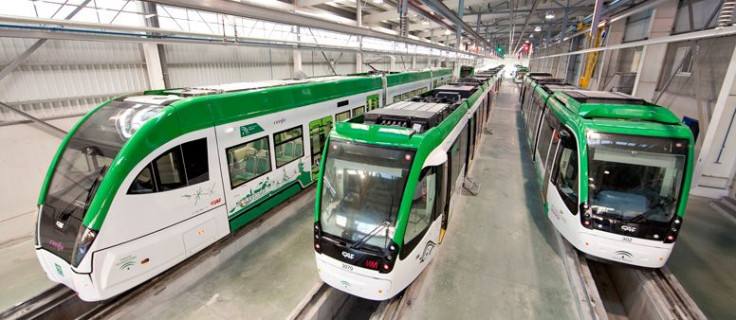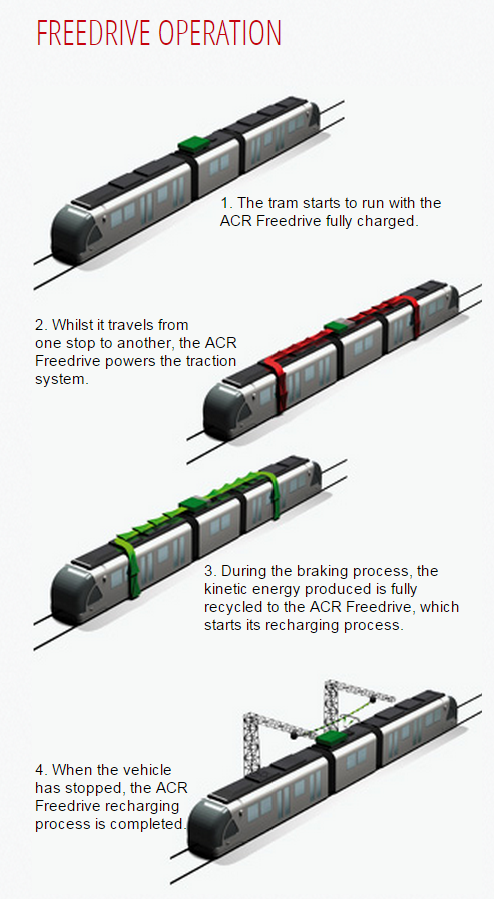Wireless Electric Rail Begins Testing Kaohsiung, Taiwan, As The World’s First Completely Cable-Free Rail System

Taiwan is beginning test runs of its half-billion-dollar light-rail project, readying the first phase to begin service in the southern port city of Kaohsiung early next year. The country’s new urban light-rail system is among the world’s first to completely forgo overhead electrical lines. Instead of the low-hanging, web-like catenaries that power most light-rail trains, Taiwan’s system uses high-energy wireless charging technology that is housed at each station.
As countries grapple with growing urban populations, the new light-rail technology allows cities to build public transportation infrastructure at lower costs, in part because they can avoid the expense of running the wired lines that most urban light-rail trains, trollies and some electric buses use.
“The [system’s] tram cars are equipped with ‘rapid charge accumulators,’ a new type of supercapacitor that will store power for the cars,” said a report from Next City, a nonprofit organization devoted to environmentally sound urban development. “Supercapacitors store less energy than batteries, but charge about 10 times faster, enabling the cars to recharge while stopped at stations on the line.”

Taiwan tapped Construcciones y Auxiliar de Ferrocarriles, CAF, the Beasain, Spain-based manufacturer of railway vehicles and equipment, to supply the wireless-charging electric rail cars. CAF’s supercapacitor trains allow travel over certain distances without being connected to the cables.
CAF’s rapid charge accumulators allow trains to operate wirelessly if the stations are within 1,400 meters of each other, or about the distance of 15 American football fields. Some cities have decided that the wireless-charging systems are too costly for their needs but have opted for the supercapacitors to allow trains to run some sections without connection to the electrical grid.
In Taiwan, testing of the 5-mile, 14-station phase of the project began over the weekend. The entire $540 million project is expected to be complete by 2017, serving the self-governing island’s second-largest city.
CAF first deployed the wireless light-rail system in limited form in the southern Spanish city of Seville in 2011. Several cities including West Midlands, England, and Debracen, Hungary, have ordered CAF trains with the supercapacitor power storage, but few of them seem interested in the wireless charging. Cincinnati, Ohio, for example, chose CAF’s “on-wire” supercapacitor trains, because the wireless-charging system “was higher priced and determined to have limited applicability, given the topography of Cincinnati's first streetcar route.”
CAF says the trains can charge in 20 seconds while parked under the accumulators set up at stations as passengers enter and exit the cabs. Wireless charging reduces light rail electricity consumption by 30 percent compared with trains that use catenaries, the company says. The trains also use regenerative braking found in gasoline-electric hybrid cars, which harvests kinetic energy during the braking process and sends the power to the supercapacitors for redeployment as the train starts moving again.
© Copyright IBTimes 2025. All rights reserved.






















